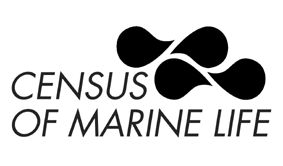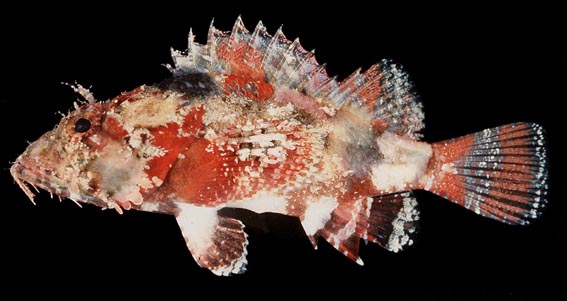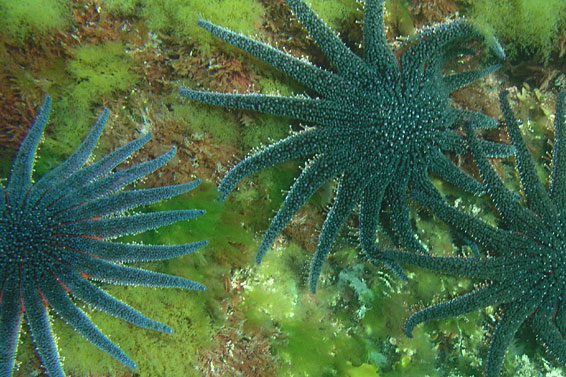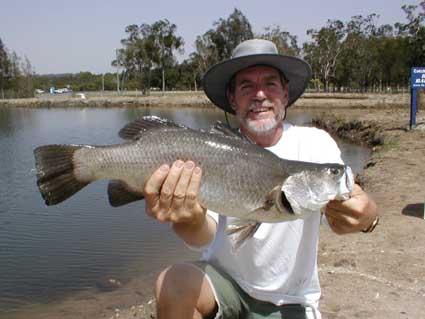
Marine Life Society of South Australia Inc.
Newsletter
January 2004
No. 306"understanding, enjoying & caring for our oceans"
Next Meeting
Our first meeting for 2004 will be held at the Conservation Centre, 120 Wakefield Street, Adelaide on Wednesday 21st January commencing at 7.30 pm.
Our speaker will be Ben Brayford who will be showing a selection of slides from the DEH Photo Index. MLSSA and its members have made contributions to this resource.
Contents
Census of Marine Life
Stony Coral Study
Whales, Wrecks & Wetlands
Red sea urchin ‘almost immortal’
Tony Isaacson
Contributors
This month our contributors are Philip Hall, Steve Reynolds, Tony Flaherty (using a BBC report) and Tony Isaacson.
2004 CALENDARS
If you are holding any money for calendar payments could you get it to either Phill McPeake or Philip Hall as soon as possible please.

Census of Marine Life
In The Advertiser of Saturday 25th October 2003 there was a short article on the "Census of Marine Life" which is a ten year project to list the different species, their populations and where they live in the oceans of the world. Some 300 scientists from 53 countries are working on the project to compile a detailed database of world marine life. By 2010 more than 2 million species is expected to have been recorded with approximately 5000 new fish species.
I went to their website at www.coml.org and within a few minutes found a fascinating array of information, some of which is shown below.

A new species of scorpionfish, Scorpaenopsis vittapinna, found in the Indo-Pacific area, one of a rapidly growing list of more than 15,300 marine fish species now logged in the Census of Marine Life database. Photo by Bill Eschmeyer and John E. Randall.

These three Sunflower sea stars, Pycnopodia helianthoides, were photographed in Prince William Sound in May 2003. The Latin, which translates to dense-footed sunflower, refers to the thousands of tube-like feet on the underside of the arms that stretch out making these creatures resemble beautiful aquamarine sunflowers.
I feel sure that this website will give MLSSA members many hours of pleasurable discovery over the next 7 years.
Philip Hall
Stony Coral Study
If you managed to read Christopher Deane’s "South Aussie Snippets" column in the October issue of Dive Log you would have read about the work of Samantha Burgess. According to Chris, Samantha (Sam) is undertaking a PhD studying the stony coral Plesiastrea (NOT Pleasiastrea) versipora. Sam came along to our October General Meeting to enquire about any photographs of Plesiastrea versipora. Unfortunately, I only managed to have a quick word with Sam before the meeting started with our two guest speakers for the evening. I only managed to introduce Sam to two photographers in Chris Hall and Neville Skinner. David Muirhead came in about that time but he had left again during our refreshment break before I could introduce Sam to him. I contacted Sam by email later on saying: -
"Hi Sam. At time of writing I haven’t heard from you as yet. I found your details in the Oct issue of Dive Log. You wanted to know David Muirhead’s email address which is shown above. Could you tell us more about your studies please? I have a paper written by Nigel Holmes in the 80s. It concerns the examination of indicator radio-isotope, fluorescence and growth/density banding in Plesiastrea corals. Is this of any interest? Steve".
In her reply, Sam gave me the following details: -
"The blurb in ‘South Aussie Snippets’ is a very brief summary of one of the aims of the project. I started a PhD earlier this year in collaboration with SARDI Aquatic Sciences and ANU (Australian National University). I am using the stony coral Plesiastrea versipora as an environmental proxy and will examine the geochemical record present in cores extracted from live coral. I’m hoping to obtain samples from the Eastern Great Australian Bight, Spencer Gulf and Gulf St Vincent and the Southeast coast to compare oceanic conditions recorded in the cores. Because Plesiastrea is such a slow growing organism a large colony may contain oceanographic records for several decades which will provide environmental information such as water temperature and whether there has been any increase in temperature within the gulf environments. With any west coast and southeast samples I will be tracing barium (upwelling origin) to look at the frequency and intensity of the summer upwelling. The project is split between Canberra and Adelaide and once I have collected coral samples from appropriate areas I will be relocating to use the mass spectrometer facilities in the geology department at ANU. As I am interested in biology as well as geochemistry I will be trying to determine some aspects of the ecology of the massive form of Plesiastrea. I have been in contact with Nigel (Nigel Holmes) and he is getting back to me with some locality information but I had not heard about his paper - I would be very interested in reading it! I have had some success in locating coral in Gulf St Vincent and Spencer Gulf, but so far I haven't had any definite locations worth pursuing in the eastern GAB or in the southeast, so if you know of any large coral colonies (greater than 1 m) in these locations that would be brilliant. I know Plesiastrea is found around the entire Australian coastline so if either of you or other photographers from MLSSA have come across any large colonies in QLD or WA that would be helpful. Also are there any other divers/scientists you would recommend chatting to about coral locations. Thankyou for your time and any information you can provide in locating large Plesiastrea colonies. Regards, Sam".
I replied to Sam by email saying: -
"Hi Sam. This is great news. I’ll pass these details on to SA & Australian divers. You could speak to veterans such as Ben Cropp & Steven Domm. Try Karen Gowlett-Holmes too. Search the Web for addresses. I’ll send Nigel’s paper to you C/- PIRSA/SARDI if that’s OK. Steve".
Steve Reynolds
Whales, Wrecks & Wetlands
Unfortunately, I could not attend the launch of the Whale-watching season at the SA Whale Centre at Victor Harbor on Friday 6th June due to work commitments. It did get a mention on the TV news that night though. It was also reported in the Advertiser the next day. Tourism Minister Jane Lomax-Smith apparently declared the season open at the launch. I was disappointed at missing out on the launch but at least I had a wreck dive planned for the following Sunday with Geoff, Dennis & my buddy Peter. But then Geoff rang me to say that Dennis had the flu and the bad storms during the week had stirred everything up too much. He was postponing the dive to the following Saturday but I could not join in on that day. Peter said that we should hold off and plan a dive later when conditions were much better. So what was I now going to do on the Sunday of the June long weekend? Then, as if to answer my prayers, I found a notice in the Saturday Advertiser. The City of Salisbury was celebrating World Environment Day (5th June) on Sunday 8th June (World Ocean Day) by putting on tours of their wetlands. The City of Salisbury is a world leader in wetland design and water management. They have established many wetlands in their area. The main ones that they have are at Greenfields, Burton and Parafield Airport. Although I have occasionally visited some of their wetlands, Greenfields is only open during the week and Parafield is not normally open to the public. One-hour tours were running from 10am to 1pm on the Sunday so Noeleen and I visited the Greenfields Wetlands on Salisbury Highway at 10am for a tour designed for bird enthusiasts. We both enjoyed our guided tour of the wetlands, even though it was a quiet time of year. We took a small pair of binoculars with us but the guide carried a large telescope around with him for everyone to peer through. After a quick cuppa, we considered our next move. The 11am tours had already started at the other two wetlands. We had already seen a little of Kaurna Park at Burton which is usually open to the public. The tour there was for those interested in native wildlife but it was a little distance further away. We opted for a tour of the nearby Parafield Wetlands at 12noon. They were going to show everyone just how stormwater is harvested. This tour was in a small bus though and we were driven around the large wetlands area. It was all very interesting despite being a little technical. We brought home a bag full of literature about the different wetlands and other attractions in the Salisbury area such as the (world-famous) St Kilda Mangrove Trail. This information will go into our Society library. Our visit to the two wetlands helped to fill in our day quite well and we still had the bag full of literature to read back at home. I hope to see the whales at Victor Harbor sometime during winter and I may do my wreck dive soon, but it was nice to visit the wetlands on World Ocean Day which seemed appropriate somehow. My thanks to the City of Salisbury for allowing us the opportunity to visit their wetlands.
Steve Reynolds
Red sea urchin ‘almost immortal’
By Dr David Whitehouse
BBC News Online science
editor
The red sea urchin found in the shallow waters of the Pacific Ocean is one of the Earth’s longest-living animals. The small, spiny creature can last for more than 200 years with few signs of age-related disease, a US research team from Oregon and California has found. The animal, which grows to more than 15 cm across, grazes on marine plants and uses its spines to deter predators. "No animal lives forever, but these red sea urchins appear to be practically immortal," said Dr Thomas Ebert.
The urchins (Strongylocentrotus franciscanus) were once considered the scourge of the sea. They ate plants in kelp forests and people believed they were at least partly responsible for the decline of that marine ecosystem - and so tried to poison them. However, the spherical echinoderms became valuable in the 1970s when the US sold them to Japan, where their sex organs were considered a delicacy. They brought high prices, and at one point in the 1990s were one of the most valuable marine resources in California. Now, studies indicate red sea urchins grow a lot more slowly and live a lot longer than had been believed - certainly longer than the seven to 15 years previously assumed.
The latest work on sea urchin growth rates uses measures of the isotope carbon-14, which has increased in all living organisms following the atmospheric testing of atomic weapons in the 1950s." Radiocarbon testing in this type of situation provided a very strong test of growth rates and ages," says Dr Ebert, from Oregon State University. "Some of the largest and we believe oldest red sea urchins up to 19 centimetres in size have been found in waters off British Columbia, between Vancouver Island and the mainland."
"By our calculations, they are probably 200 or more years old. They can die from attacks by predators, specific diseases or being harvested by fishermen. But even then they show very few signs of age. The evidence suggests that a 100-year-old red sea urchin is just as apt to live another year, or reproduce, as a 10-year-old sea urchin."
In fact, the indications are that the more mature red sea urchins are the most prolific producers of sperm and eggs, and are perfectly capable of breeding even when incredibly old. "Among other things, [the radiocarbon data] confirmed that in older sea urchins, there is a very steady, very consistent growth that’s quite independent of ocean conditions or other variables, and once they near adult size our research indicates they do not have growth spurts."
The research is published in the US Fishery Bulletin, by scientists from Oregon State University and the Lawrence Livermore National Laboratory.
Story from BBC
NEWS:
http://news.bbc.co.uk/go/pr/fr/-/1/hi/sci/tech/3232002.stm
Published:
2003/11/24 14:26:13 GMT © BBC MMIII
Contributed by:
Tony Flaherty, South Australian Coordinator, Marine & Coastal Community
Network (SA) Phone 61 8 8302 6568 Fax 61 8 8302 6239 - mobile 0429 678
869
E-dress - <sa@mccn.org.au> web -

Tony Isaacson is a MLSSA member now living in Queensland. We get reports from time to time of his activities and this is a great record for the Newsletter of just one of the things he gets up to. The email received in November 2003 read (in part) as follows:
"Picture of a teacher’s moment with the Marine and Aquatic Practices class (year 12) a few weeks ago. Both the fish and the memories of a 20 minute battle of wills are alive and well."